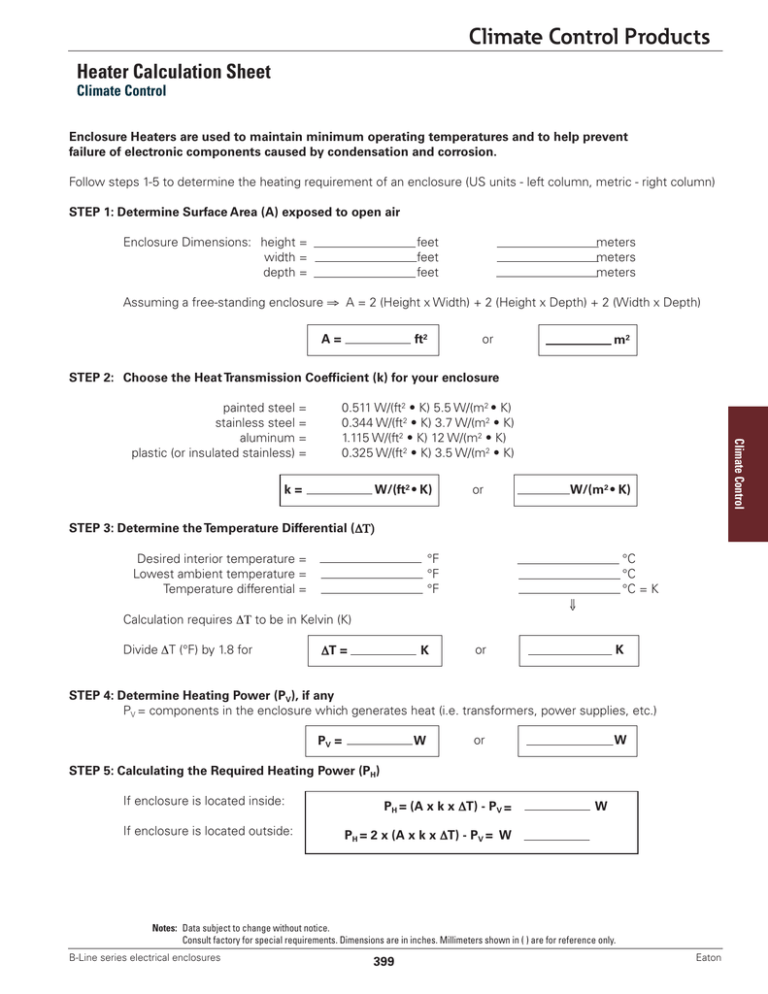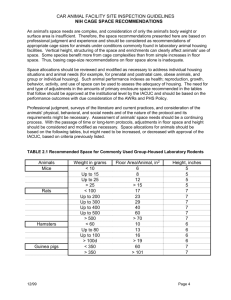Climate Control Products Heater Calculation Sheet Climate Control
advertisement

Climate Control Products Heater Calculation Sheet Climate Control Enclosure Heaters are used to maintain minimum operating temperatures and to help prevent failure of electronic components caused by condensation and corrosion. Follow steps 1-5 to determine the heating requirement of an enclosure (US units - left column, metric - right column) STEP 1: Determine Surface Area (A) exposed to open air Enclosure Dimensions: height = width = depth = feet feet feet meters meters meters Assuming a free-standing enclosure ⇒ A = 2 (Height x Width) + 2 (Height x Depth) + 2 (Width x Depth) ft2 A= or m2 STEP 2: Choose the Heat Transmission Coefficient (k) for your enclosure 0.511 W/(ft2 • K) 5.5 W/(m2 • K) 0.344 W/(ft2 • K) 3.7 W/(m2 • K) 1.115 W/(ft2 • K) 12 W/(m2 • K) 0.325 W/(ft2 • K) 3.5 W/(m2 • K) W/(ft2 • K) k= or Climate Control painted steel = stainless steel = aluminum = plastic (or insulated stainless) = W/(m2 • K) STEP 3: Determine the Temperature Differential (ΔΤ) Desired interior temperature = Lowest ambient temperature = Temperature differential = °F °F °F °C °C °C = K ⇓ Calculation requires ΔΤ to be in Kelvin (K) Divide ΔT (°F) by 1.8 for ΔT = K or K STEP 4: Determine Heating Power (PV), if any PV = components in the enclosure which generates heat (i.e. transformers, power supplies, etc.) PV = W or W STEP 5: Calculating the Required Heating Power (PH) If enclosure is located inside: If enclosure is located outside: PH = (A x k x ΔT) - PV = W PH = 2 x (A x k x ΔT) - PV = W Notes: Data subject to change without notice. Consult factory for special requirements. Dimensions are in inches. Millimeters shown in ( ) are for reference only. B-Line series electrical enclosures 399 Eaton




